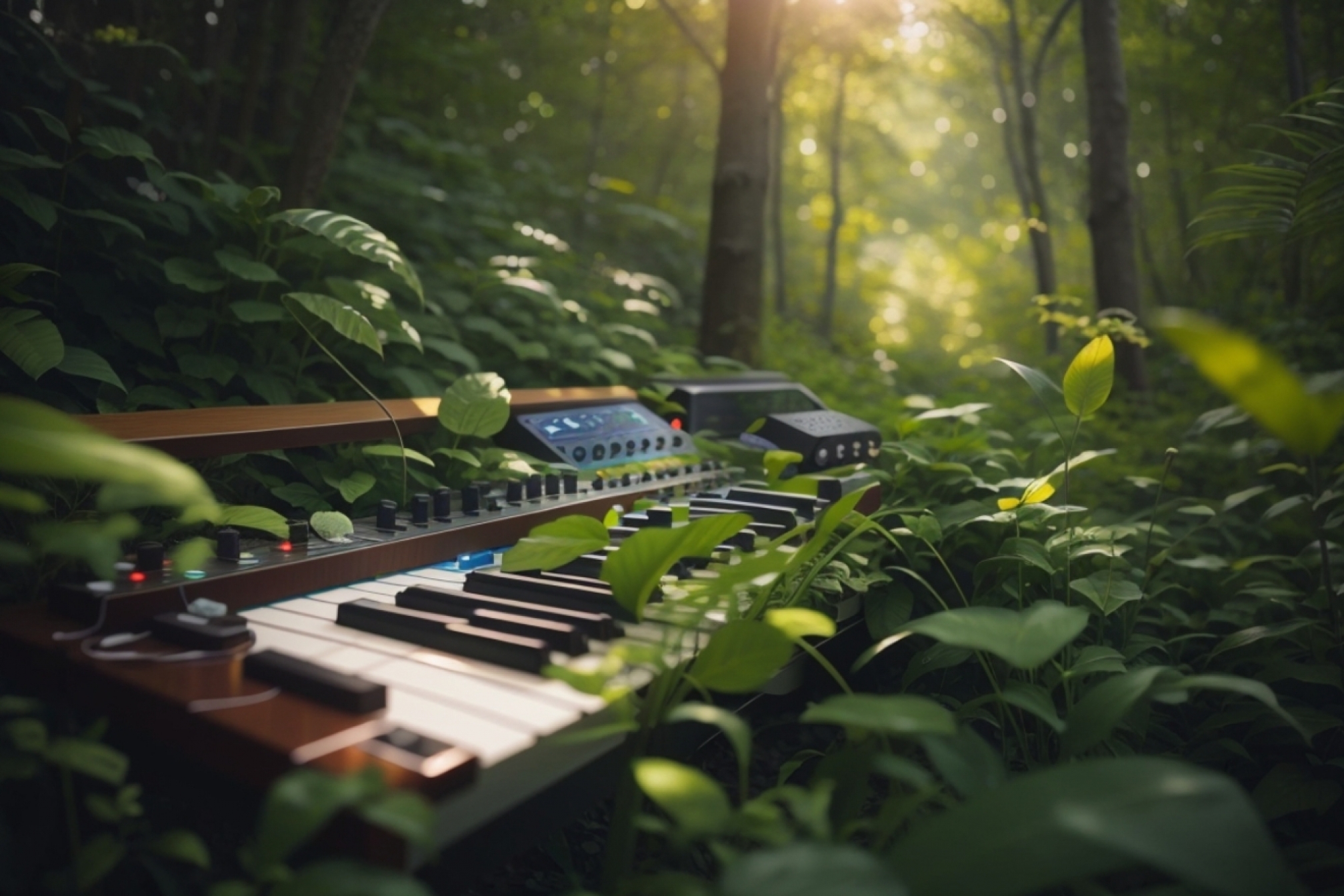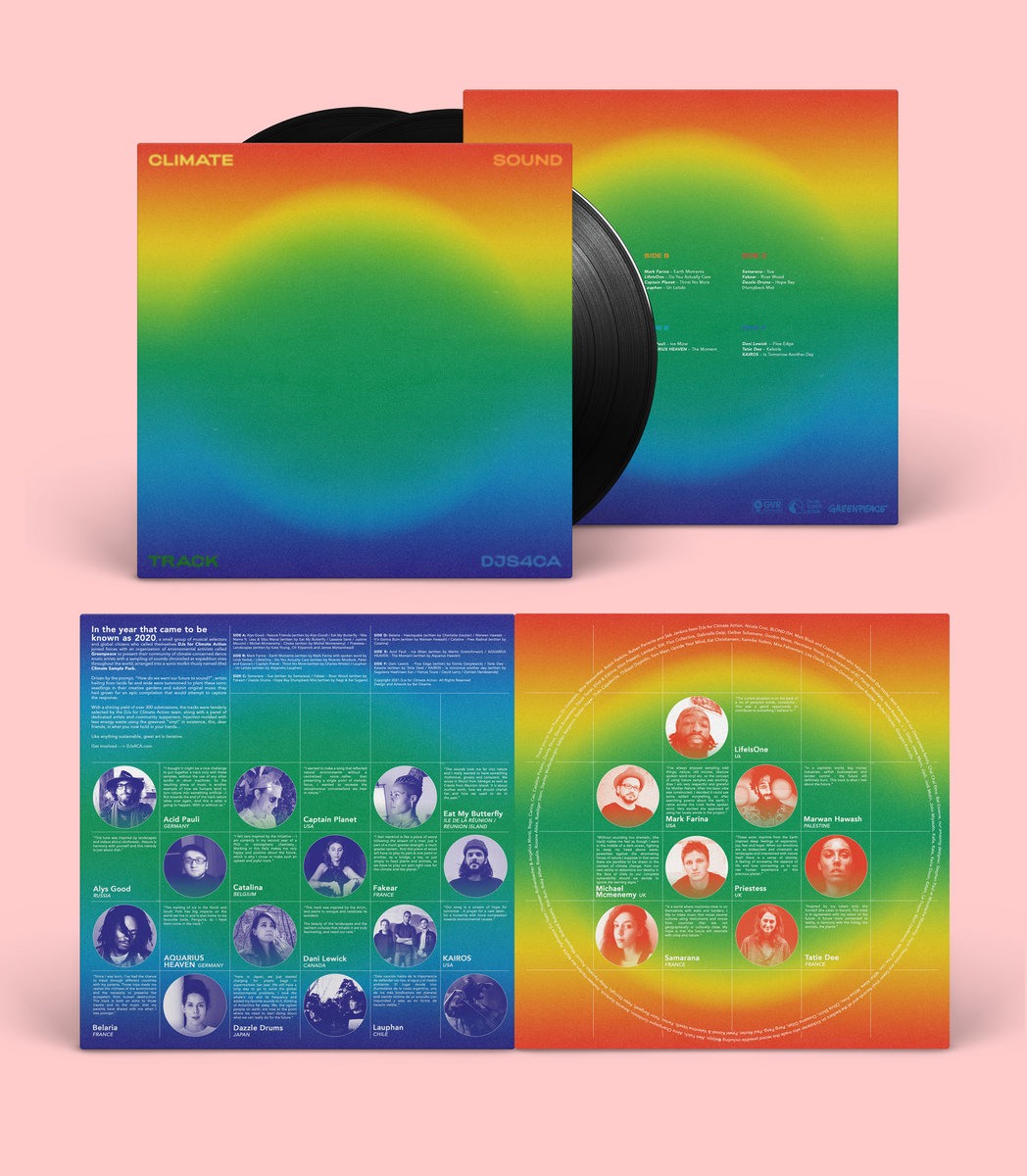 Features
Features
The sounds of Mother Nature: how natural frequencies are inspiring electronic music
From the oceans to outer space, come see how our natural surroundings are a gold mine of musical treasures
As we continue to create music on the planet we reside on, we’re also learning more about Mother Nature. Each continent, ocean and living thing that occupies this celestial body has a unique sound embedded within them that us humans are slowly learning to harness into potential melodies and symphonies.
Researchers, musicians and creators have learned to capture sounds from Earth and beyond through our solar system. With advanced technology, data sonification can be used to translate scientific data into music, allowing us to transform these natural discoveries into sounds we never thought possible to hear. This includes discovering music through plants, fruits, and even black holes. Certain synths and MIDI controllers have also turned into unconventional methods to extract music from inanimate objects.
Many artists have gone into the depths and corners of the earth to capture alluring sounds through field recordings and use that to create tracks. Luis Gutierrez (Like Animals) and Viv Yumul sifted through the forests of Batangas, Philippines, Flora Yin-Wong captured twisted field recordings from the ancient valleys of North Wales, C.R Gillespie rallied up a series of field recordings as he travelled through Vietnam, and Yosi Horikawa travelled through the most obscure locations of the Earth for his second album. Dutch label Field Records also ventured out to Asia earlier this year for workshops as they looked to share the practice of field recordings.
Read this next: How Shi Fu Miz sets to make an environmental impact at this year’s event
Also, our need to be sustainable has led us towards a direction of reusing, reducing and recycling our musical products — highly inspired by Mother Nature, too! As a result, it's created a number of sustainable musical paraphernalia, such as House of Marley’s bamboo turntable, vinyl made from bioplastic, a record box made from plastic waste and Potato Head Bali’s DJ booth that is made from 564 kgs of recycled plastic.
Read this next: Dan Mitchell is making Space Available in the music industry for recycled plastic
When it comes to nature’s calling, there are scientific positive effects on how humans have an innate connection with nature through evolutionary traits. Natural sounds can contribute to a calming effect on the nervous system thus increasing endorphins and reducing hormones like cortisol that come from stress, with some sounds (such as rainfall and waves) having biorhythmic patterns which are able to synchronize your heart rate towards a more relaxed state.
We’ve compiled a list of sounds and initiatives inspired by nature that may help with discovering a new set of resources when creating your next track…or simply to listen to while your mind wanders.
Desert Songs
When it comes to aesthetic designs, Love Hulten has always gotten the green light from us with his unique take on audio-visual creations. For one of his creations, he extracted an eerily calming melody via cacti using a custom synthesizer. Shaped like a contraption from the 80s, the uses the biodata from a cactus garden in order to create ‘Desert Songs’.
By using the MIDI data via the cactus, he uses electrodes to transfer PlantWave straight to a Korg NTS-1 for waveshaping and finally music to our ears.
For more information on the ‘Desert Songs’ device, click here.
Sounds of Shrooms
What can’t mushrooms do? You can now find speakers made from mushrooms as they have found their way through the music industry via their sound-proofing and acoustic properties. Two companies EDEN Power Corp and MYCOAUDIO partnered together to produce the R1 Bookshelf Speaker that is constructed entirely from a mushroom.
The device uses a reishi mushroom mycelium core insulation that is a more sustainable option than plastic foam and is cased in a raku-fired ceramic shell.
To learn more about the sound of the future, click here.
Bonus: Click here for a different take on how mushrooms are used to create music by producer Tarun Nayar.
A Woodland Synth
SOMA Labs creates the TERRA synth; a beautiful microtonal instrument etched into a single piece of solid wood that is able to execute a full range of sounds similar to a grand piano. The digital touch synthesizer includes 32 algorithms which allow for timbre control and pitch shifts while allowing complex atonal noise.
You can purchase the TERRA synth here for 1,200 Euros; find out more about the product here.

The Climate Soundtrack Compilation
Not set with a specific sound, but this uses a wide range of nature’s callings. DJs for Climate Action (DJs4CA) shares a 41-track compilation of music that inspires climate action from a range of promising producers who entered a contest.
A sample pack of field recordings such as iceberg claps, whales singing, monsoons, birds in the Indonesian rainforest and more sounds of nature were provided by Greenpeace for DJs to create their own rendition.
Learn more about the compilation from DJs for Climate Action (DJs4CA) here.
An Electromagnetic Symphony
As our planet provides us with beautiful nature sounds, our universe and solar system do the same as well. NASA has shared a musical representation of the butterfly nebula by using data sonification. What is essentially a giant cloud of dust and gas, has turned into a symphony of “soothing sounds” that fits into a nice instrumental playlist.
To learn more about how NASA translated data to sound, click here.
The Voice of the Red Planet
Our neighbouring planet Mars has revealed to us (well, technically to NASA) that the celestial body also known as the ‘Red Planet’ has two speeds of sound. Discovered via the Mars Perseverance rover, the sounds that can be heard include a crackling whir, puffs, zaps, martian wind and the twin rotors on the Mars helicopter, Ingenuity.
For more on the sounds from Mars, click here.
Cosmic Growlings from A Black Hole
We’re still discovering what space has to offer, but we’ve gone a little bit niche here with the sounds coming from the pits of a black hole. The Perseus galaxy cluster is giving us all things eery and its echoes definitely give us the feel of diving into a deep dark endless hole.
These cosmic sounds were captured about 200 million light years away from Earth and sure do resonate with a few techno tracks out there.
To understand more about how data sonification is used to create these sounds, click here.
The Black Hole’s EP
If the sounds of a black hole peak an interest, there’s a whole EP that’s curated from actual sounds of black holes. Valery Vermuelen, a Belgian mathematician along with Stephen Hawking and Dr. Thomas Hertog has synthesized data from satellites through sonification and turned them into 6 tracks in the album titled Mikromedas AdS/CFT 001.
Explore more of the release here.
Songs from the Reef
The Earth truly has many unique nodes to it, and the ocean is one of them. Under the deep blue sea, we have a whole different world of marine life and with that comes its own set of sounds. One particular group of sounds come from a healthy coral ecosystem which can be heard through ‘reef songs’.
A thriving marine life within a healthy reef has given us sounds of mainly crackles, purrs, croaks, grunts and pops — a unique symphony that can only be heard under the sea.
Learn how ‘reef songs’ are created here.
Colours of the Marine
Not quite the sounds from an ocean, but the readings of “ocean colour” data and sediment data. A NASA scientist, Ryan Vandermeulen and his brother Jon Vandermeulen have used real-life data collected by NASA’s Goddard Space Flight Center scientists to create an ambient oceanographic symphony.
Learn more about the process here.
Miki Kitasako is Mixmag Asia’s Social Media and Content Producer, follow her on LinkedIn.


